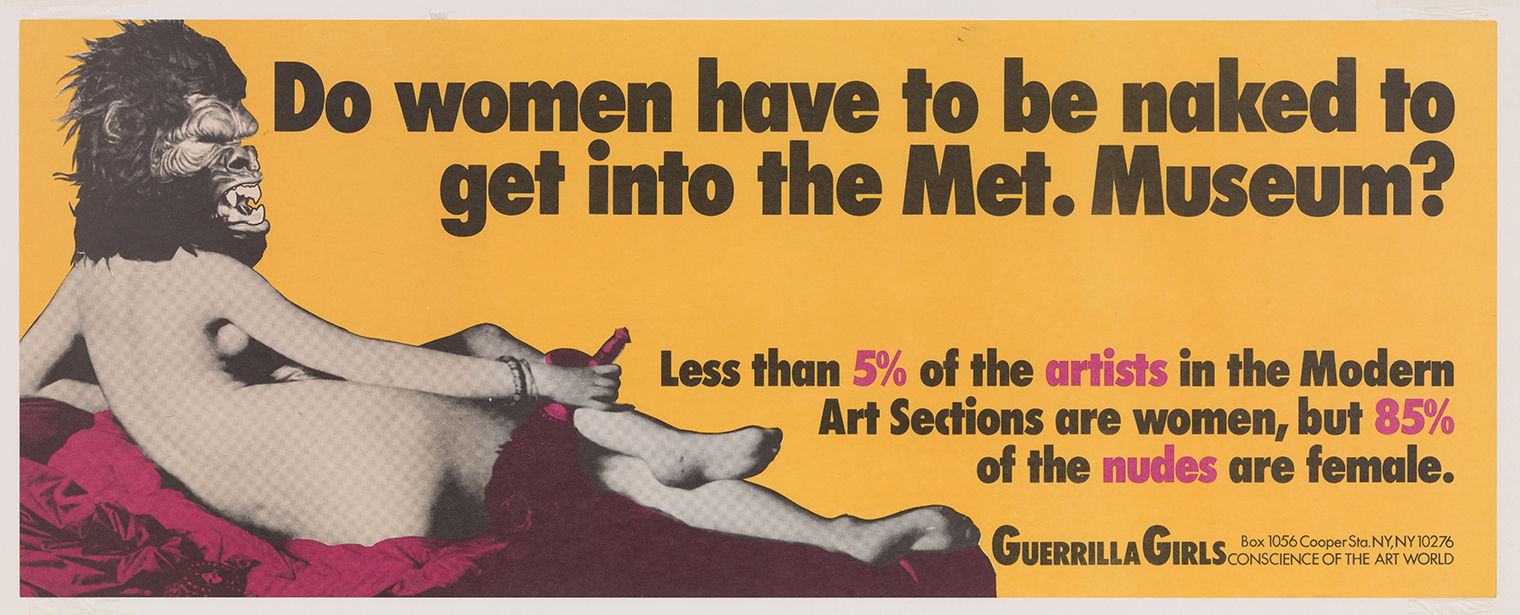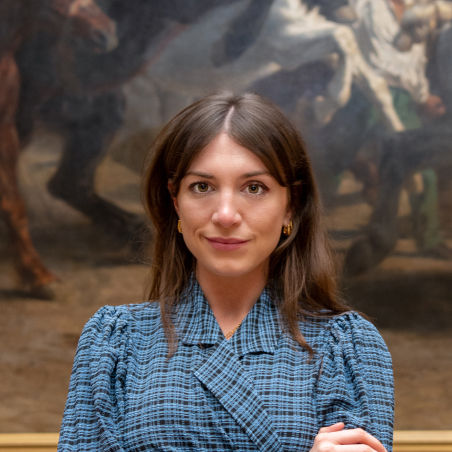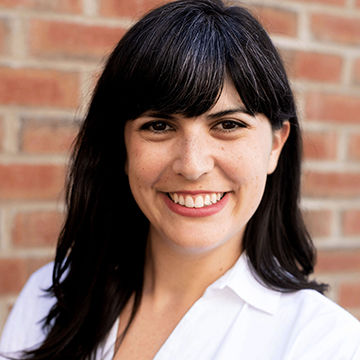Have you ever wandered the galleries at The Met and thought about the gender representation on display?
In 1989, the Guerrilla Girls questioned this and famously found out that “Less than 5% of the artists in the Modern Art sections are women, but 85% of the nudes are female.” Katy Hessel and Met curator Allison Rudnick revisit this 20th-century art collective’s public bus campaign that challenges patriarchal assumptions about the legitimacy of artists.
Listen to the conversation, or read the full transcript below.
Transcript
KATY HESSEL: In 1989, a group of feminist artists—the Guerilla Girls—were fed up with inequities in the art world. At the time...
ALLISON RUDNICK: It was primarily male artists who were gaining success and their art was selling for just unprecedented prices. So the Guerrilla Girls were frustrated.
HESSEL: That’s curator Allison Rudnick. And while male artists were flourishing, few women were represented in museum collections or exhibitions.
To figure out how to respond to these inequities, the Guerrilla Girls came to The Met, and they scoured its galleries for artworks by women. They came across Odalisque, a painting of an extremely conventional looking nude woman by nineteenth-century male painter Ingres: thin, light-skinned, totally naked. And they used it as inspiration to make a provocative, iconic poster. It shows the nude from The Met, but…
RUDNICK: The Guerrilla Girls have made an intervention here by placing a gorilla mask on the head of the nude… And it’s titled Do Women Have To Be Naked To Get Into the Met. Museum?

Guerrilla Girls (American, established 1985). Do Women Have To Be Naked To Get Into the Met. Museum?, 1989. Lithograph, 11 x 28 in. (27.9 x 71.1 cm). The Metropolitan Museum of Art, New York, Gift of Scott, Lauren, and Lily Nussbaum, 2021 (2021.70). © Guerrilla Girls, courtesy guerrillagirls.com
HESSEL: Underneath the title in big letters, they also cite a statistic: 85% of nudes from the Modern and Contemporary wing in The Met were of women, but only 5% of artworks were actually by women.
RUDNICK: There’s really no arguing with statistics. And so they’ve made this argument, and there’s really no rebuttal. They’re presenting these facts as indisputable. And these are issues that come up still time and time again in the mass media. So this is, for better or for worse I would say, a timeless work. It’s still just as urgent in many ways as it was when it was made in 1989 because some things have changed, but a lot hasn’t.
HESSEL: I’m Katy Hessel, I’m a writer who has dedicated my career bringing attention to women artists and renegotiating the canon of art history. The Guerilla Girls have been enormously influential on my life and work. I’ve just written a book called The Story of Art Without Men, and today, I’m walking through the Museum to answer some of the questions that the Guerrilla Girls provoked almost thirty years ago. In talking to curators and artists, we’ll wonder, do women actually have to be naked to get into The Met? Are there any great women artists? What does “greatness” mean anyway? Listen on to find out.
###
This audio tour is one in a series of tours called Museums Without Men produced by Katy Hessel in collaboration with institutions across the globe, such as the Fine Arts Museum San Francisco, the Hepworth Wakefield, the Hirshhorn Museum and Sculpture Garden, and Tate Britain. The series encourages museum visitors to seek out work by great women and gender non-conforming artists in these institutions who, simply by virtue of their gender, were often overlooked and underrepresented.






















